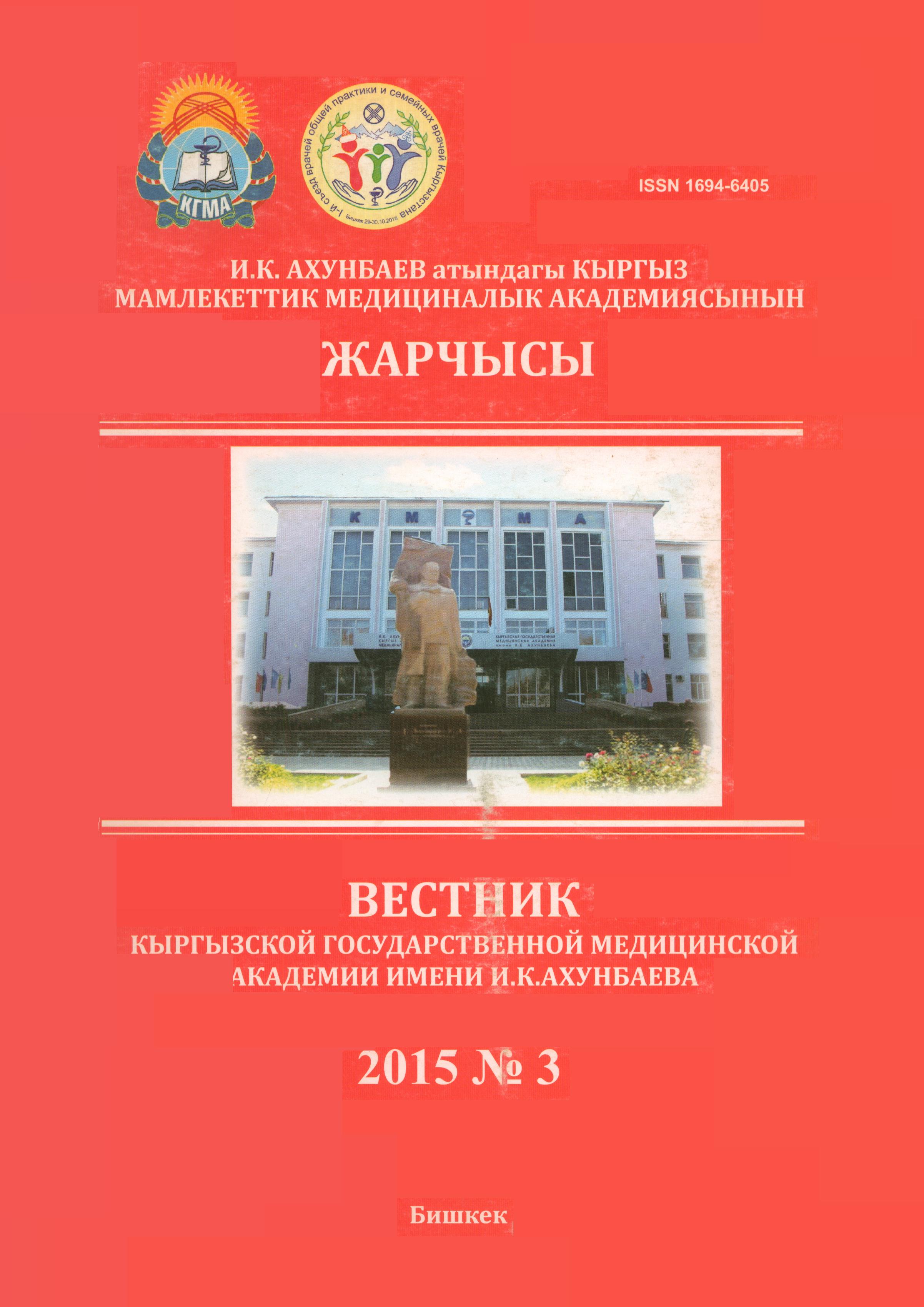ВЗАИМОСВЯЗЬ АРТЕРИАЛЬНОЙ РИГИДНОСТИ С ВЫРАЖЕННОСТЬЮ СЕРДЕЧНО – СОСУДИСТОГО РЕМОДЕЛИНГА У БОЛЬНЫХ ЭССЕНЦИАЛЬНОЙ ГИПЕРТЕНЗИЕЙ
Аннотация
Цель работы: изучение взаимосвязи показателей артериальной жесткости, в первую очередь индекса аугментации, с выраженностью сердечно–сосудистого ремоделирования.
Материал и методы: обследовано 155 больных ЭГ в возрасте 30-70 лет. Проведено общеклиническое обследование, определение ряда биохимических показателей: уровня сахара и креатинина крови и липидного спектра (уровни ЛПНП, ЛПВП и триглицеридов), дуплексное сканирование сонных артерий, ЭхоКГ, определение жесткости артерий методом контурного анализа пульсовой волны.
Результаты: обнаружена взаимосвязи между АС поражением сонных артерий и артериальной жесткостью у больных ЭГ, в частности с показателями AIx 75 и AIx, которые являются интегральными показателями влияния артериальной ригидности на центральное АД. В то же время взаимосвязи AIx и других показателей артериальной жесткости с наличием ГЛЖ нами выявлено не было.
Ключевые слова:
эссенциальная гипертензия, атеросклероз, жесткость сосудов, гипертрофия левого желудочка.Библиографические ссылки
1. Tsuchikura S., Shoji T., Kimoto E. et al. Brachial-anklepulse wave velocity as an index of central arterial stiffness. J. Atheroscler. Thromb. 2010; 17(6): 1865-1871.
2. Mitchell G.F., Hwang S.J., Vasan R.S. et al. Arterialstiffness and cardiovascular events: the Framingham Heart Study. Circulation. 2010; 121(4): 505-511.
3. Boutouyrie P., Bussy C., Hayoz D. et al. Local pulsepressure and regression of arterial wall hypertrophy during long-term antihypertensive treatment.Circulation. 2000; 101(22): 2601–2606.
4. Roman M.J., Devereux R.B., Kizer J.R. et al. Centralpressure more strongly relates to vascular disease and outcome than does brachial pressure: the Strong Heart Study. Hypertension, 2007; 50(1): 197–203.
5. Roman M.J., Okin P.M., Kizer J.R. et al. Relations ofcentral and brachial blood pressure to left ventricular hypertrophy and geometry: the Strong Heart Study. J. Hypertens., 2010; 28(2): 384–388.
6. Roman M.J., Ganau A., Saba P.S. et al. Impact of arterialstiffening on left ventricular structure. Hypertension. 2000; 36(4): 489–494.
7. O’Rourke M.F., Safar M.E., Dzau V. (Eds.). ArterialVasodilation: Mechanisms and Therapy. 1993. Edward Arnold, London.
8. Теренс М. Артериальное давление и артериальнаяригидность в 21-м веке. В кн.: А.И. Мартынов (ред.) Новые возможности оценки артериальной ригидности — раннего маркера развития сердечно-сосудистых заболеваний (материалы симпозиума). Русский врач, Москва, 2007. 48 с.
9. London G.M., Blacher J., Pannier B. et al. Arterial wavereflections and survival in end-stage renal failure. Hypertension. 2001; 38(3): 434–438.
10. Kingwell B.A., Waddell T.K., Medley T.L. et al. Largeartery stiffness predicts ischemic threshold in patients with coronary artery disease. J. Am. Coll. Cardiol. 2002; 40(4): 773–779.
11. Safar M.E., Blacher J., Pannier B. et al. Central pulsepressure and mortality in end-stage renal disease. Hypertension. 2002; 39(3): 735–738.
12. Danchin N., Benetos A., Lopez-Sublet M. et al.; ESCAPP Investigators. Aortic pulse pressure is related to the presence and extent of coronary artery disease in men undergoing diagnostic coronary angiography: a multicenter study. Am. J. Hypertens. 2004; 17(2): 129–133.
13. Jankowski P., Kawecka-Jaszcz K., Bryniarski L. et al.Fractional diastolic and systolic pressure in the ascending aorta are related to the extent of coronary artery disease. Am. J. Hypertens., 2004; 17(8): 641–646.
14. Mitchell G.F., Parise H., Vita J.A. et al. Local shearstress and brachial artery flow-mediated dilation: the Framingham Heart Study. Hypertension. 2004; 44(2): 134–139.
15. Jankowski P., Kawecka-Jaszcz K., Bryniarski L. et al.Fractional diastolic and systolic pressure in the ascending aorta are related to the extent of coronary artery disease. Am. J. Hypertens. 2004; 17(8): 641–646.
16. Wang K.L., Cheng H.M., Chuang S.Y. et al. Central orperipheral systolic or pulse pressure: which best relates to target organs and future mortality? J. Hypertens., 2009; 27(3): 461–467.
17. Vlachopoulos C, Aznaouridis K, Stefanadis C.Prediction of cardiovascular events and all-cause mortality with arterial stiffness: a systematic review and meta-analysis. J Am Coll Cardiol. 2010 Mar 30;55(13):1318-27.
18. Mitchell GF, Hwang SJ, Vasan RS et al. Arterial stiffness and cardiovascular events: the Framingham Heart Study. Circulation. 2010 Feb 2;121(4):505-11.
19. Janner JH, Godtfredsen NS, Ladelund S et al. Highaortic augmentation index predicts mortality and cardiovascular events in men from a general population, but not in women. Eur J Prev Cardiol. 2013 Dec;20(6):1005-12.
20. Matsui Y, Ishikawa J, Shibasaki S et al. Associationbetween home arterial stiffness index and target organ damage in hypertension: comparison with pulse wave velocity and augmentation index. Atherosclerosis. 2011; 219(2): 637-642.
21. Davies J.E., Lacy P., Tillin T. et al. Express pressureintegral predicts cardiovascular events independent of other risk factors in the conduit artery functional evaluation substudy of Anglo-Scandinavian Cardiac Outcomes Trial. Hypertension. 2014; 64(1): 60-68.
22. Rabkin S.W., Chan S.H. Correlation of pulse wavevelocity with left ventricular mass in patients with hupertension once blood pressure has been normalized. Heart Int. 2012; 7(1): 5-10.
23. Gomes-Marcos M.A., Recio-Rodriguez J.I., Patino-Alonso M.C. et al. Relationship between electrocardiographic left ventricular hypertrophy criteria and vascular structure and function parameters in hypertensive patients. J. Hum. Hypertens. 2014; 28(3): 186-192.
24. MRC European Carotid Surgery Trial: interim resultsfor symptomatic patients with severe (70-99%) or with mild (0-29%) carotid stenosis. European Carotid Surgery Trialists’ Collaborative Group. Lancet. 1991 May 25;337(8752):1235-43.



